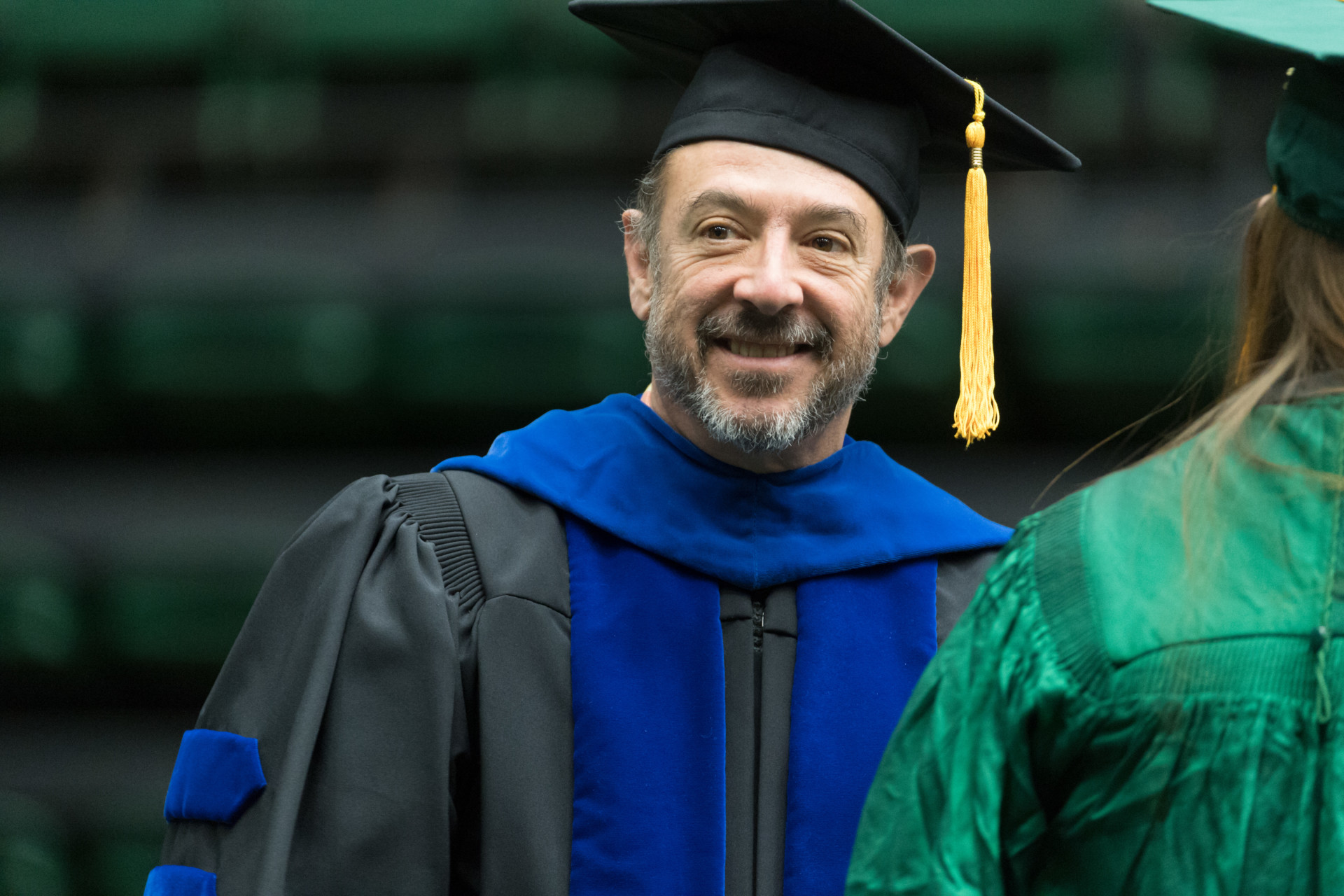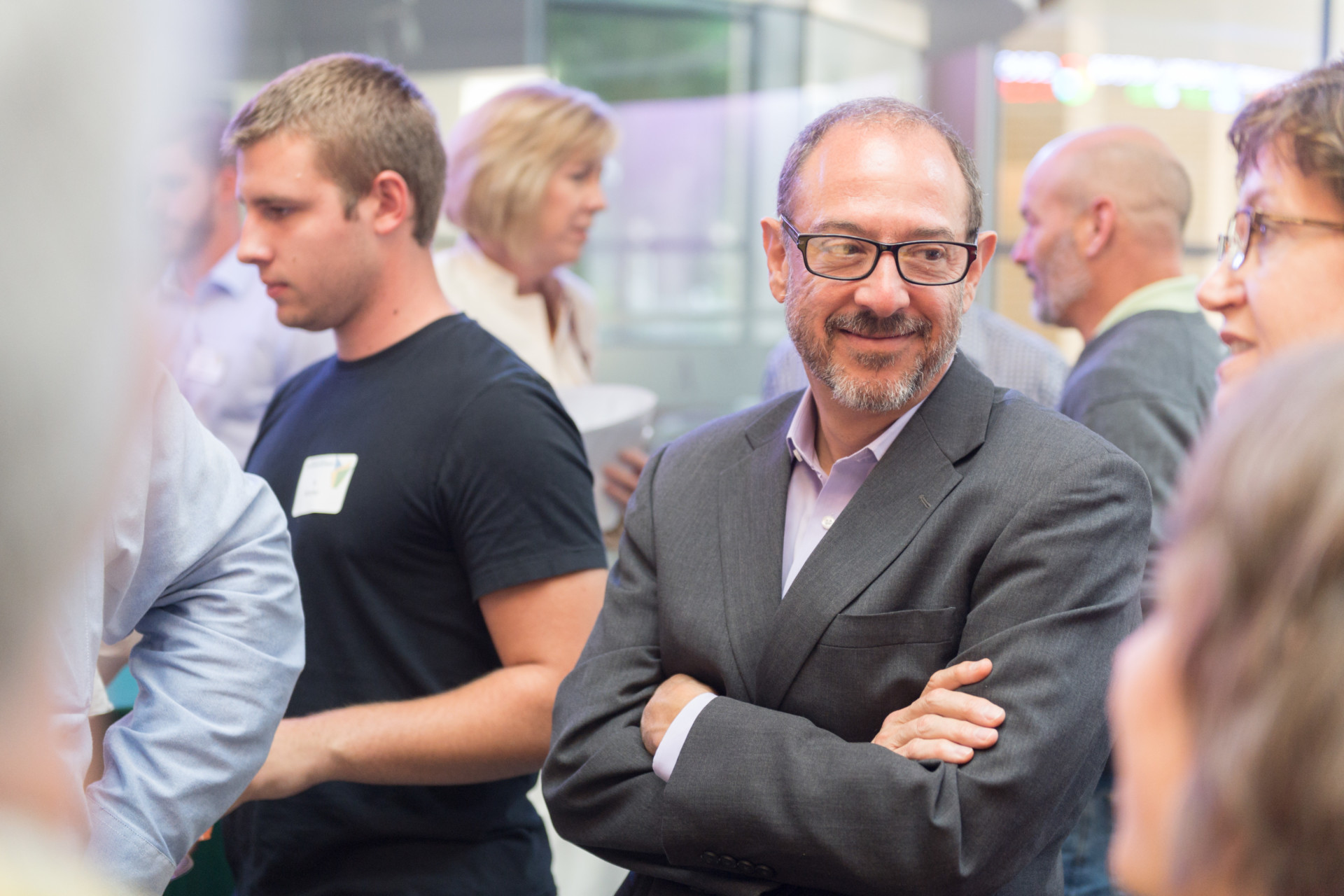
Rick Miranda starts in his role as interim president of Colorado State University on July 1.
The Board of Governors of the Colorado State University System recently announced that Rick Miranda, chief academic officer for the CSU System, will serve as interim president of the CSU flagship campus in Fort Collins while the Board undertakes a national search for the 16th president of CSU. As Miranda gets ready to assume the interim role on July 1, he took some time to discuss his priorities as well as the search for the new president of CSU.
Welcome, how does it feel to be back at Colorado State University and in Fort Collins?
Honestly, I never actually left. While I’ve been working as the CSU System chief academic officer, I’ve also been teaching here on campus and live in Fort Collins – and I’ve worked closely with the provost and her team in my CAO role. But obviously, this role is different from the other positions I’ve served in on campus, so I appreciate the opportunity to be back in a way that allows me to serve the University through the interim – and I’m grateful to all those who are helping me get up to speed quickly.
You’ve spent much of your career at CSU – what is it that keeps you at CSU?
I’ve had the benefit of wonderful colleagues and a working environment that may be many things but it’s never boring! CSU has given me opportunities throughout my career to work in different capacities – as a faculty member, department chair, dean, provost, and now again as a faculty member. One of the great things about CSU is that there are always ways to be involved, to bring forward new ideas, and to push the boundaries and the culture to move it forward. Of course, personally, this is our home (my wife, Jeanne Duflot Miranda is also a mathematics professor); this is where we’ve raised our kids.
“One of the great things about CSU is that there are always ways to be involved, to bring forward new ideas, and to push the boundaries and the culture to move it forward.”
—Rick Miranda, incoming interim president of CSU
It’s a great place to live, and I’m fortunate that I’ve had many, many opportunities through my discipline to teach and work with colleagues on other campuses around the world, which I suppose has helped quell any wanderlust. But my experience has also made me very aware of the responsibility we have to ensure our younger faculty and staff have the same opportunities and support to build rewarding homes and careers here that those of us who have been here a long time have had. I never take that for granted – the future of CSU depends on the people we are recruiting and retaining today, and that means we have to work relentlessly to stay competitive and treat our people well.
As interim president, can you share your top priorities?
An interim appointment is its own kind of animal … the goal is to provide stability, manage any hiccups that arise, and keep good things moving forward so the campus is well-prepared for the arrival of the permanent president. Personally, my priorities are to quickly come up to speed on where the University is administratively, academically, and budget-wise, and to support our entire campus team as we get through the summer and prepare for a new academic year in August.
Do you anticipate significant changes in leadership or major initiatives at this time? Should CSU staff modify their work because of this change?
No. A change in presidents is a decision reached between the president and the Board of Governors. It’s a big change, of course, and it takes some adjustment on the administrative side, but it doesn’t directly impact most of the day-to-day work of the University, which carries on as usual.
What does this change mean for the Courageous Strategic Transformation effort?
The Board of Governors has endorsed the strategic planning effort, and it provides a good basis for planning moving forward. I’ll be meeting with the deans, VPs, and campus leadership – it may be that we slow some things down until the new president is on board and has an opportunity to weigh in, and I expect other elements will continue to move forward. Those are the kinds of things we’ll be talking about in the leadership meetings over the remainder of the summer so we can hit the ground running in the fall.
How long do you anticipate the search for a new president will take?
It’s always hard to say – I’d guess anywhere from six months to even a year. The Board is working with a search firm and establishing a Presidential Search Advisory Committee with broad campus representation. I expect that part of the process will move very quickly. But at this level, and with a presidency that’s very attractive to many people, we could well have applicants who are already in similar roles at other institutions and the finalist may need some time to wrap up that work.
Are you interested in the permanent position?
No, I will not apply.


Miranda joined the CSU faculty in 1982 and served as provost and executive vice president for 12 years. He has also served as chief academic officer of the CSU System – which includes CSU Fort Collins, CSU Pueblo, CSU Global, and initiatives including the CSU Spur campus at the National Western Center, CSU Todos Santos Center, Sturm Collaboration Campus, and CSU Mountain Campus – since 2012.
What are some of the major initiatives you’ve been working on as chief academic officer for the CSU System since leaving your CSU provost post in the summer of 2020, and what are their anticipated impact?
My role as CAO involves representing the CSU System with various state and national working groups and also working with all three of our CSU System campuses to move various initiatives forward. That includes the standard activity of shepherding academic policy changes and new degree programs through the Board of Governors’ approval process and keeping the Board informed on the work of our faculties.
In addition, we’ve worked collaboratively as a System to launch a set of Student Success Initiatives for each campus, with funding from the Board to pursue some new activities there. I’m coordinating with the team on our Todos Santos campus in Mexico and (Vice Provost for International Affairs) Kathleen Fairfax here at CSU as we explore how to reactivate and reenergize our offerings there post-pandemic.
I’ve worked to support some new pathways programs in conjunction with the opening of the Spur campus, an area where I think we’ll continue to have a lot of opportunity. I also participated with the campus provosts, former CSU Vice Provost Kelly Long, and Kathay Rennels, who serves as special adviser to the chancellor on rural issues, in the National Association of System Heads Leadership Academy last year. Our CSU System group focused our conversations on how to facilitate progress on rural initiatives in Colorado, and that helped form the basis for the major rural initiative that the Board of Governors approved and funded a year ago that’s now underway.
Given your roles at both CSU and the CSU System, how do you characterize the way the two entities interact?
The System doesn’t teach classes or award degrees. It is a comparatively small administrative operation that exists to implement the goals, vision and priorities of our Board of Governors, who are appointed by the Governor and confirmed by the Legislature to oversee all of the System campuses and operations. They represent the people of Colorado, and their role is to ensure that all of our CSU entities return real value to the state and our students.
The Chancellor and System staff manage some of the central administrative functions for all three of our campuses, including relationships with policymakers and the Board of Governors. We also play a coordinating and convening role around initiatives where all three campuses have the potential to benefit and look for opportunities to create efficiencies and save everyone money by working more collaboratively. And the System is uniquely positioned to pursue new opportunities to showcase the work of our faculty and respond to emerging state needs in ways that play to the different strengths of all three of our campuses.
The creation of the Spur campus is perhaps the greatest example of that. It’s a project that no campus would have been able to pull together on its own, but it’s going to deliver enormous benefits to all three of our campuses – while growing the number of kids with an interest in degrees and careers in food, water, and human and animal health.
What else would you like the campus community to know about this transition?
I’d like to offer thanks to President McConnell and Chancellor Frank for their help as I get ready to step in, and to the Board for entrusting me with the interim role. Beyond that, I’d tell the campus to just focus on doing the great work that you do every day that makes CSU a top-tier university – that’s the work that matters most to our students and the people who support us. Ideally, an administrative change like this should be seamless and more or less invisible to people who don’t interact with the President’s Office on a regular basis.